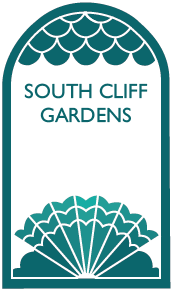A moment to be alive to the vulnerability – and vitality – of the natural world.
In an exciting new partnership with Scarborough’s Victorian-era South Cliff Gardens, award winning art-science organisation, Invisible Dust, is delighted to launch ‘Garden to Garden‘, a programme that will explore the changing ways we see, hear and experience nature; all through the lens of bees.
In these unusual times, as many of us are forced to slow down and stay home, we gain an opportunity to see deeper into our home worlds, and by doing so, realise that we are far from alone within these microuniverses – and in our communities. A garden, be it our own modest patch, window box or our local public green space, offers the perfect setting for some creative exploration that delves deep and close, into the natural world that surrounds us.
Launching in July 2020 and led by visual artist, Feral Practice, with the support of sound artist, Rob Mackay, in collaboration with a range of scientists and researchers from across the UK, this digital programme will connect a global digital network of people exploring their own green spaces to South Cliff Gardens; an inspiring expanse of sea-facing public gardens in Scarborough, which began development in the mid 19th century. Managed by Scarborough Borough Council, the gardens are currently being restored
with the help of National Lottery Heritage Fund and National Lottery Community Fund.
Through a variety of online engagement activities for young people and families, and a final film celebrating our bees (featuring a range of scientists and members of the Scarborough community), ‘Garden to Garden’
will be a creative exploration of the insects and nature that we coexist with and depend on.
‘Garden to Garden‘ is also an opportunity to reflect where we are as a people and planet, and to look back at the past and connect ourselves to some of the ways of being that we have perhaps lost and can learn
from again.
The formation of the Victorian South Cliff Gardens came at the time of both Charles Darwin, Alfred Russel Wallace and Mary Anning, whose research and understanding of the Natural World brought the Victorians
closer to nature and changed the world’s thinking on how we relate to plants and animals. Scarborough is notable for its expertise in natural history, with local societies being active in recording and collecting since
the mid 19th century, significant collections held by Scarborough Museum, and the (now digitised) Natural History of the Scarborough District (Rimington, F.C. and Walsh, George B., 1953) as powerful benchmarks
for biodiversity comparison. The very active Scarborough Field Naturalists Society is currently working with the artist on the project.
From learning from the Victorians with an insect and flower identification guide, to going on micro-cosmic journeys and ‘ento-sleuthing’ with hand held microscope and more, we will explore how Victorian entomologists learnt about their subjects and see how it compares with and influences the way we collect data and study today.


Comments are closed